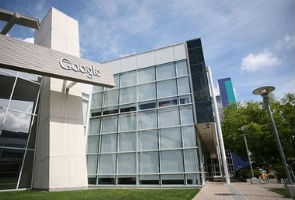South Carolina: On a tract of government land along the Savannah River in South Carolina, an army of workers is building one of the nation's most ambitious nuclear enterprises in decades: a plant that aims to safeguard at least 43 tons of weapons-grade plutonium by mixing it into fuel for commercial power reactors.
The project grew out of talks with the Russians to shrink nuclear arsenals after the cold war. The plant at the Savannah River Site, once devoted to making plutonium for weapons, would now turn America's lethal surplus to peaceful ends. Blended with uranium, the usual reactor fuel, the plutonium would be transformed into a new fuel called mixed oxide, or mox.
"We are literally turning swords into plowshares," one of the project's biggest boosters, Senator Lindsey Graham of South Carolina, said at a hearing on Capitol Hill last week.
But 11 years after the government awarded a construction contract, the cost of the project has soared to nearly $5 billion. The vast concrete and steel structure is a half-finished hulk, and the government has yet to find a single customer, despite offers of lucrative subsidies.
Now, the nuclear crisis in Japan has intensified a long-running conflict over the project's rationale.
One of the stricken Japanese reactors at the Fukushima Daiichi plant uses the mox fuel. And while there has been no evidence of dangerous radiation from plutonium in Japan, the situation there is volatile, and nuclear experts worry that a widespread release of radioactive material could increase cancer deaths.
Against that backdrop, the South Carolina project has been thrown on the defensive, with would-be buyers distancing themselves and critics questioning its health risks and its ability to keep the plutonium out of terrorists' hands.
The most likely customer, the Tennessee Valley Authority, has been in discussions with the federal Department of Energy about using mox to replace a third of the regular uranium fuel in several reactors, a far greater concentration than at the stricken Japanese reactor, Fukushima Daiichi's Unit No. 3, where 6 percent of the core is made out of mox. But the T.V.A. now says it will delay any decision until officials can see how the mox performed at Fukushima Daiichi, including how hot the fuel became and how badly it was damaged.
"We are studying the ongoing events in Japan very closely," said Ray Golden, a spokesman for the utility.
At the same time, opponents of the South Carolina project scored a regulatory victory this month when a federal atomic licensing panel, citing "significant public safety and national security issues," ordered new hearings on the plans for tracking and safeguarding the plutonium used at the plant.
Obama administration officials say that mox is safe, and they remain confident that the project will attract customers once it is further along and can guarantee a steady fuel supply. Anne Harrington, who oversees nuclear nonproliferation programs for the Energy Department, noted that six countries besides Japan had licensed the routine use of mox fuel. She accused critics of "an opportunistic attempt" to score political points by seizing on Japan's crisis.
"Mox is nothing new," she said.
Even so, the critics say there is an increasing likelihood that the South Carolina project will fail to go forward and will become what a leading opponent, Edwin Lyman of the Union of Concerned Scientists, calls a "plant to nowhere." That would leave the United States without a clear path for the disposal of its surplus plutonium.
A cheaper alternative, encasing it in glass, was canceled in 2002 by President George W. Bush's administration. The energy secretary at the time, Spencer Abraham, is now the non-executive chairman of the American arm of Areva, a French company that is the world's largest mox producer and is primarily responsible for building the South Carolina plant.
After the cold war, the United States and Russia were left with stockpiles of plutonium, and the fear was that one or the other would reverse course and use the plutonium to make new weapons, or that, in what the National Academies of Science called a "clear and present danger," thieves could make off with it.
Plutonium is easy to handle because the radiation it gives off is persistent but relatively weak. The type used in weapons, plutonium 239, has a half-life of 24,000 years and emits alpha rays. They make the plutonium feel warm to the touch but are so feeble that skin easily stops the radiation. If trapped inside the body, though, alpha rays can cause cancer.
At the same time, plutonium is preferred over uranium as nuclear bomb fuel because much less is needed to make a blast of equal size. And while it is difficult to work with, it does not need to undergo the complex process of purification required for uranium.
The 43 tons of surplus plutonium in the American stockpile could fuel up to 10,000 nuclear weapons and even more "dirty bombs", ordinary explosives that spew radioactive debris. Alternatively, they could fuel 43 large reactors for about a year.
After studying a range of options, the Clinton administration decided to build a mox fuel plant to dispose of a portion of the plutonium, awarding a contract to a consortium now called Shaw Areva Mox Services.
The rest of the plutonium was to be mixed with highly radioactive nuclear waste and immobilized in glass or ceramic blocks, making it difficult and dangerous for any thief to extract. The government judged the mox route to be more expensive, but the dual-track approach was seen as insurance should either fail.
That strategy also helped persuade Jim Hodges, the Democratic governor of South Carolina from 1999 to 2003, to sign off on plutonium shipments to the Savannah River Site. When the Bush administration canceled the glass-block disposal program, Mr. Hodges was furious.
His concern, he said in a recent interview, was that South Carolina would become a dumping ground if the mox program did not work out because of political or technical difficulties. "That site was never designed for long-term plutonium storage," he said. "We were concerned about health and safety." Now, he said, that dumping ground is in danger of coming to pass.
Mr. Abraham said that budget cuts had made it necessary to end one of the programs, and that with the Russians favoring mox, the administration had feared that going the other route would discourage Moscow from keeping its end of the bargain. (Only later, Mr. Abraham added, did he decide to join Areva in a largely advisory role.)
"The politics of it -- both from a budget standpoint and in terms of the Russian comfort level -- both argued for going to the mox-only approach," he said.
If mox fuel was to be licensed for widespread use, though, Washington first needed to have it tested in reactors. Duke Energy agreed to use French-made mox. The government paid $26 million to prepare a reactor, according to the Energy Department. But a test in 2005 was aborted after the fuel began behaving strangely. Though the problem was ultimately traced to a different material in the fuel assemblies, Duke subsequently said it had no further plans to test or use the mox.
Along the way, the cost of the South Carolina project, originally about $1 billion, nearly quintupled. Energy Department officials said cost increases were to be expected because the original estimates were rough approximations. The sprawling plant, which is just south of Aiken, S.C., is to be bigger in size than eight football fields, and its construction currently employs nearly 2,000 workers.
For other countries, plutonium is seen as an opportunity rather than a problem. Nearly all reactors produce some plutonium as a byproduct of splitting atoms in two, and it can be gathered from spent fuel and mixed with uranium to make mox.
The United States, worried that plutonium recycling would contribute to the global spread of nuclear weapons, gave it up during the Carter administration. President Obama's panel on America's nuclear future is considering whether to recommend a return to recycling.
The Japanese government has followed the recycling path, despite citizens' protests about possible safety risks. In the wake of the accident at the Fukushima Daiichi plant, officials at Areva, which supplied the mox fuel for Reactor No. 3 there, are cautioning against drawing hasty conclusions.
"Mox was not the cause of that accident, and the consequences of it have not been impacted by mox," said David Jones, a vice president at Areva, which has been providing on-the-ground assistance in Japan.
There is no clear evidence that plutonium has been released by the mox-loaded Japanese reactor; small traces found at the site could have come from other sources or from the site's other reactors. But Reactor No. 3 is one of three at Fukushima Daiichi that are judged to have undergone at least partial meltdowns, and experts are debating whether high radiation readings beneath the reactor vessels indicate that they have begun to leak. It would take full meltdowns, high heat and the rupture of a reactor's containment vessel to loft substantial plutonium into the air.
The dangers vary depending on the chain of events that led to the accident and the concentration of mox in the reactor core. Even so, studies show that a nuclear meltdown and containment failure in a reactor that holds mox would result in more cancer deaths than one in a reactor fueled only with uranium.
In 2001, Dr. Lyman, a Cornell-trained physicist who has led the battle against mox, published a detailed study in the journal Science & Global Security that concluded the fuel could produce up to 30 percent more cancer deaths.
Energy Department officials do not dispute that there would be additional health consequences, but they see them as less severe than the critics have predicted. In any event, they argue, a major release of plutonium would require an accident so severe that the additional health effects would amount to a "sliver on top of a mountaintop."
"It's not that significant 10 percent or less," said Kenneth Bromberg, the department's assistant deputy administrator for fissile materials disposition.
"Proliferation causes a far greater danger to a far greater number of people than highly controlled use of this fuel in a reactor," said Ms. Harrington, his boss.
But critics say that in its efforts to move the mox program along, the government has undercut the nonproliferation benefits by allowing or entertaining exceptions to a number of its rules for safeguarding plutonium.
Disposing of plutonium by burning it in reactors involves moving and then storing mox fuel at a commercial site. Such a plan, they argue, could make the fuel vulnerable to theft before it is irradiated into something that would be too deadly to steal.
But at the request of Duke Energy, which had agreed to test the fuel, the government decided to exempt nuclear plants that burn mox from special security requirements imposed on other facilities that handled "strategic special nuclear material" like plutonium.
In doing so, the Nuclear Regulatory Commission overruled its own Atomic Safety Licensing Board, which had recommended a middle ground requiring some additional security. But the commissioners reasoned that mox encased in heavy assemblies would not be as attractive to terrorists as pure plutonium, and so did not require the same level of security.
Jeffrey Merrifield, one of the commission members who voted on the matter, now works for the Shaw Group, which is designing the mox plant with Areva. He said in a statement that he had not discussed jobs with the company until after the vote and that he works in a section unrelated to the mox project.
The Shaw Areva Group requested an exception to the government's material control and accounting standards for plutonium. Though the company subsequently withdrew the request, it led the Atomic Safety Licensing Board to rule that more hearings were needed to determine whether the Savannah River plant was capable of keeping track of the plutonium that is expected to move through it and on to commercial utilities.
In a statement, Shaw Areva said, "We continue to believe that the mox project meets all the regulatory requirements for licensing, and we welcome the opportunity to present our case" in hearings this year.
Ms. Harrington said security at the Savannah River Site was so tight that "I'd defy anyone to walk in and walk out with any of our plutonium."
Still, Mr. Abraham, the former energy secretary, says that given the crisis in Japan, he understands the hesitation of utilities to embrace mox.
"I can't imagine any utility would say, 'Yeah, we are going to ignore Japan,' " he said. "I think the dust has to settle here."
















